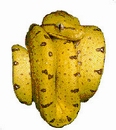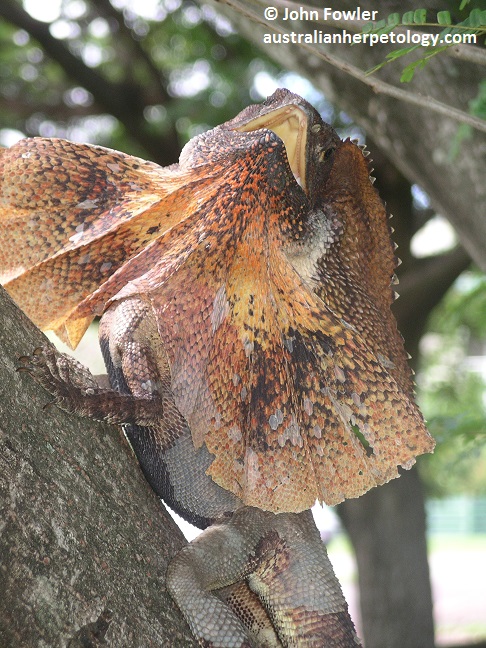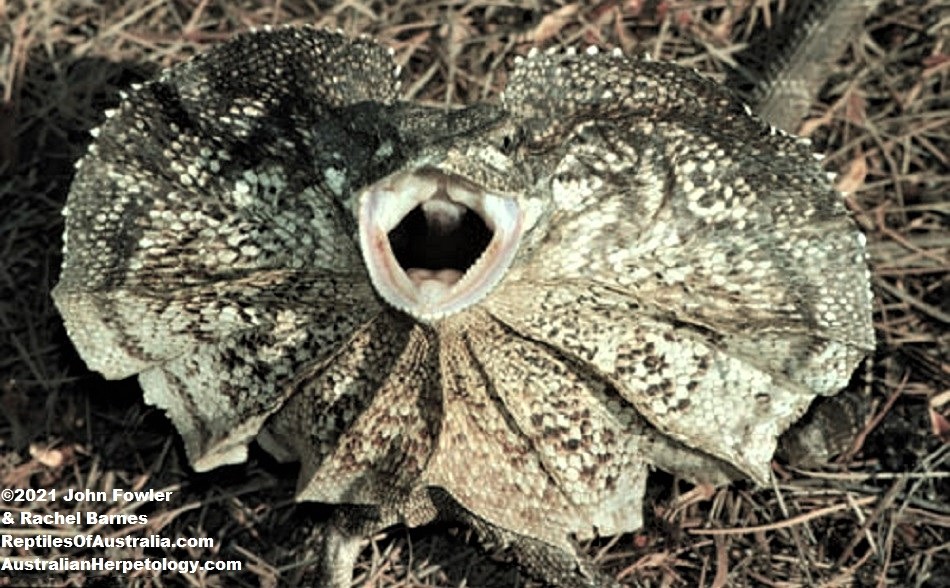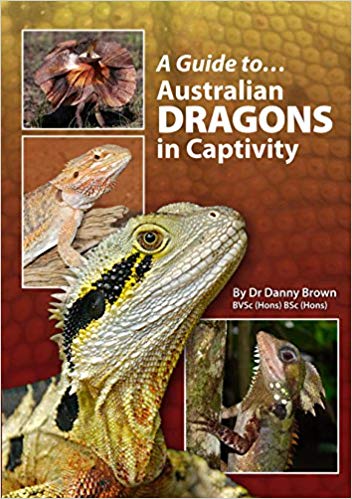|
|
Caging
They are a northern species so require warm conditions all year round, They may be kept in an outside aviary in warm weather but do not leave them out in cold weather. They also grow much larger than most bearded dragons. We recommend a black light (must be suitable for reptiles) plus an incandescent (normal globe) for basking. If no black light is supplied the they should be put in the sun from time to time, but only on warm to hot days.
Those I have kept have had a very similar temperament to Inland Bearded Dragons (P. vitticeps).

|
|
|
Food
Moths, crickets mealworms, earthworms etc, preferably dusted or gut loaded with calcium or reptile supplement for about half of the feeds. They also sometimes eat fruit, (contrary to what most people seem to believe) particularly banana.
|
|
|
Sexing
Adult males normally have larger heads and teeth and may have a black chest, - femoral pores are larger in males.
|
|
|
Breeding
Apparently they may breed at under 1 year old, although this would take a lot of feeding.
They usually lay about a dozen eggs.
These eggs should be incubated the similar to most other reptile eggs.
Special requirements
Frilled Lizards should be misted or sprayed with water from time to time, particularly in hot dry weather. If kept indoors they must have sufficient UVB light.
If several are kept together, ensure that they all get food otherwise some will not grow as fast as the others and will be intimidated by the larger dragons.
|
|
|
|
|
|
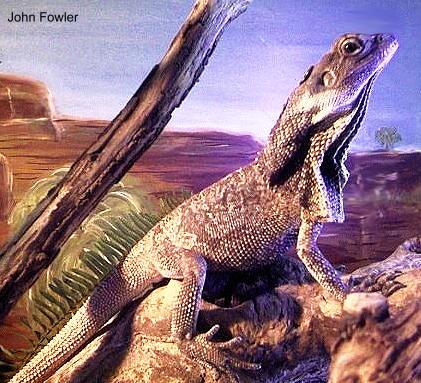
SPECIAL NOTES
In South Australia and Queensland, hatchling Frilled Dragons sell for around $350 but as they grow the price increases rapidly.
Note that wild caught Frilled lizards are not very hardy, most captive bred Frilled lizards have been bred for a few generations and appear to be hardier (especially as hatchlings) than first generation hatchlings from wild caught females. For this reason we recommend that you always insist on captive bred animals rather than wild caught animals or hatchlings from wild caught females.
RELATED LINKS
|


